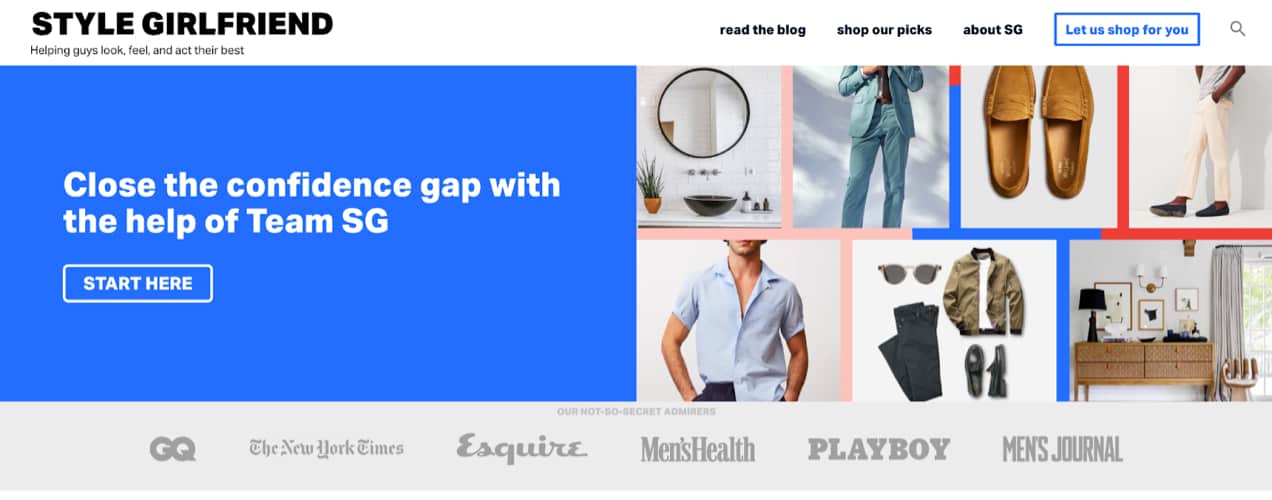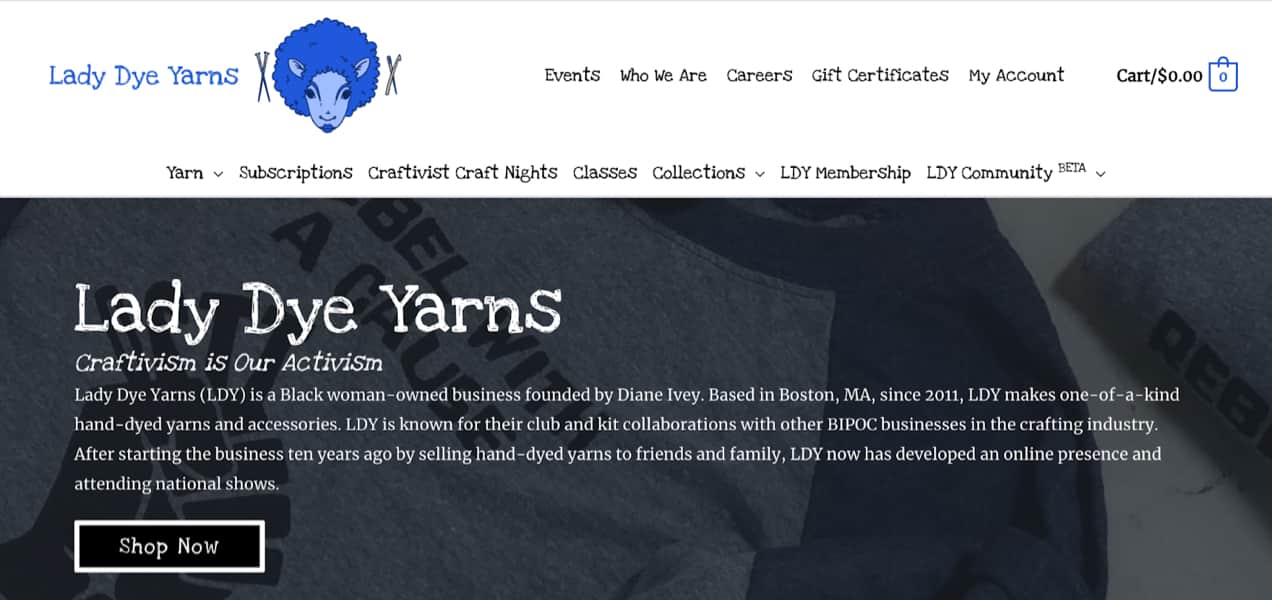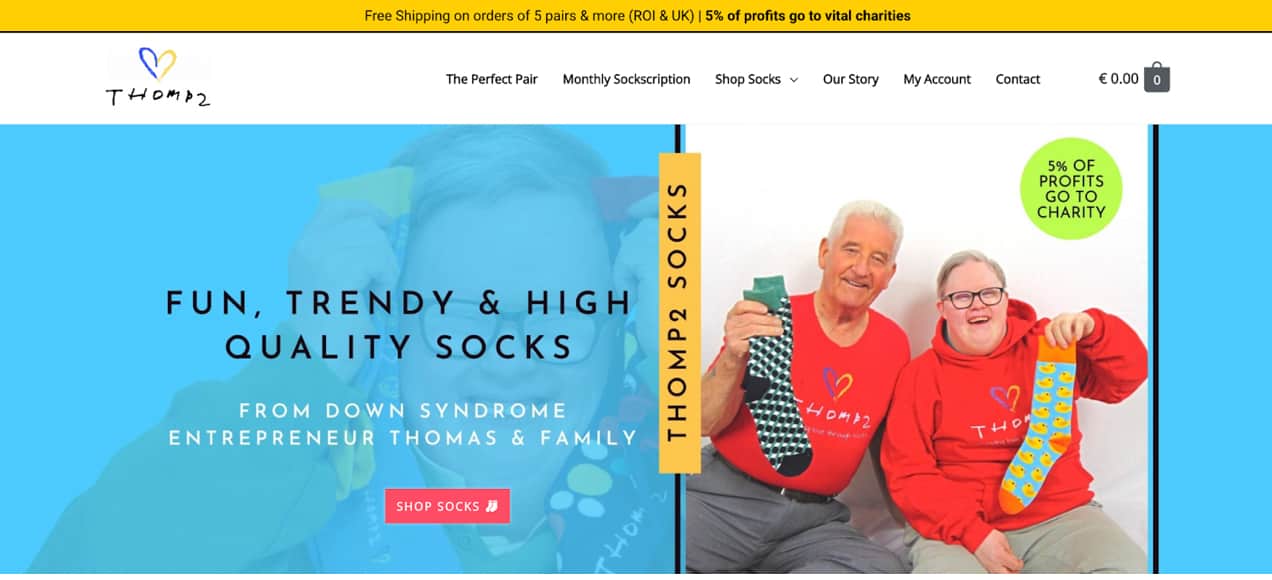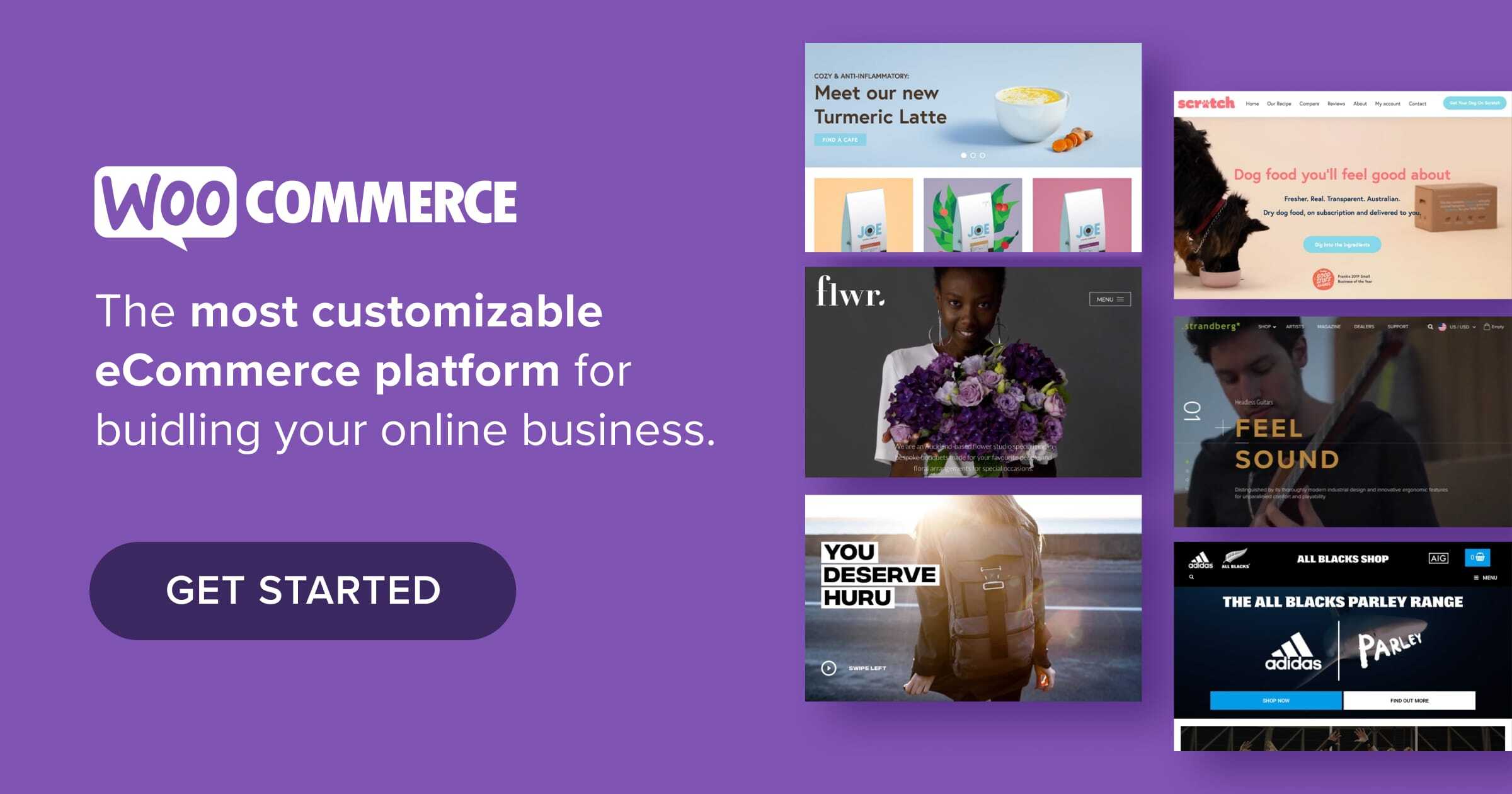[ad_1]
Every brand has a story. After all, brands are created by people. And whether the story is simple or extravagant — it’s still just that, a story of people providing value to other people through a product or service.
Brand stories are vital in helping customers understand what you have to offer. They serve to humanize a business or product, providing a transparent understanding of the who and why behind the logo.
It may sound a little silly, but humans tend to respond more to other humans. A big, monolithic company doesn’t have a face or feelings. But the founder of that company does.
Telling stories is an effective way to connect with customers, build trust and loyalty with your brand, and show how you’re different from the competition.
The best approach to business isn’t a hyper-focus on profit margins. No, the best approach to business is rooted in creating an authentic, genuine connection with people and filling a need or desire in their life. A brand story can go a long way towards achieving the first part of that equation.
What is a brand story?
A brand story is what it sounds like. It’s the depiction of how your business became what it is today. It’s the narrative of an organization’s beginnings, characteristics, values, goals, and overall mission.
Its characters are the people behind the brand — from the early founders to the people packing and shipping orders. Its plot involves deep passion for the target audience and an unshakable desire to quench the thirst of their needs.
A brand story doesn’t need to be filled with dramatic language and superhero-like stories to be compelling, but it must be truthful and go much deeper than “our founder wanted to make money.”

Why is a brand story important?
A compelling brand narrative moves your company from serving a utilitarian role in consumers’ lives to truly being something they’re proud to support — critically important if the vision for your company includes words like “lifestyle.”
People like what they like, and support what they support. A brand story is not about convincing customers to change their values, but communicating that your company aligns with their worldview. By supporting your company, these consumers will, in effect, be affirming their beliefs and contributing to the world they want to see.
A brand story increases your value beyond selling a commodity and inspires great customer loyalty. All-in-all, it’s a powerful marketing tool that can serve as a north star for decisions about messaging going forward.
Let’s take a closer look at the benefits of a powerful brand story.
It helps you connect with customers
How do you approach shopping? Most spend their money with a brand they know and love.
These days, the average consumer is looking for more than just a good product for a good price. Yes, those are very important considerations. But often, customers want to spend money with brands that they respect. They want to “vote” with their money by investing in organizations that they feel contribute to their values.

An authentic brand story offers something beyond a product to the customer, helping them understand who you are and why you do what you do. They can have a sense of your values and understand what it means to wear or use your product.
If all else is the same, consumers will go with the brand they prefer. And for many, they’ll go with their brand of choice, even if it’s more expensive or less convenient.
Plus, consumers engaged with your brand story may be more likely to refer you to their friends and family. And referred customers are more profitable and more loyal.
It builds trust and loyalty
If you can show customers how they’re contributing to something, if you can make them feel good about spending their money with you, they’ll drive the extra mile to get your product instead of the competitor’s.
As humans, we are all creatures of habit. If your business can capture the hearts of consumers and keep their trust, they’ll come back again and again.
It differentiates your brand
Unless you’ve invented the next version of the wheel, there’s a strong chance a version of your product already exists on the market. But that doesn’t mean you can’t tap into your target audience.
Compelling brand stories differentiate your brand. Sure, you might roast a similar type of coffee as another company, but your brand identity and brand personality are unique. They’re decidedly not the same as the competition, even if your product is.
Showcasing your brand’s mission, history, and core values gives shoppers the opportunity to choose a product made by people they identify with.

For example, maybe an outdoor enthusiast founded the aforementioned coffee company. Perhaps their packaging reflects this interest and the company supports nonprofits that provide outdoor opportunities for underrepresented youth. Maybe the founder talks about crafting their main roast specifically to take on long hikes or weeks-long camping trips.
People who are avid bikers, skiers, or hikers may be more likely to choose this brand and tell others in the outdoor community about their new find.
It showcases the conflict or problem you solve
A compelling mission is one thing, but if your story doesn’t demonstrate how a problem was solved or value created, your audience is not going to part with their hard-earned money.
People will still ask themselves, “What does this do for me?”
The problem your brand solves is the villain of your story.
Maybe you’ve created a product that overcomes a common obstacle for people — and the idea came out of your own struggles. Tell that origin story. It’s very valuable, because potential customers will see themselves or their problems and how your product or service solves them.
A brand story isn’t just about personality or a flashy mission statement. The problem-solution narrative is what holds attention and relates beyond customers’ values to their everyday issues.
Take a look at the brand story example of Style Girlfriend, a website dedicated to helping men dress well. Its origin story isn’t that complicated. The website started out of a column about what women like to see men wear — and slowly morphed into a full-fledged website for style consulting.

This brand story shows how the idea grew and matured by solving a problem encountered by one subset of people. It doesn’t mean that only men struggle with style or that all men struggle with style. But for men who want to step up their game but don’t know how — Style Girlfriend hits the target perfectly.
It humanizes your brand
Remember: People respond to people.
No matter your brand identity or personality, the most compelling brand stories revolve around the real lives of real people. A brand story should tell customers about the who behind the what, and if they like the who, they’re more likely to engage.
Think about your own personal life. If you walk into a store and a friendly and knowledgeable person greets you, you may be more likely to stick around and purchase something. But if you come in looking for help and everyone turns the opposite way, you can’t find the exit fast enough.
The same concept applies to crafting brand stories. When customers see behind the curtain and it’s presented in a way that’s friendly and warm, they’ll feel better about spending money.
Look at this interview with a key person behind NW Eye Design, a company that creates and sells prosthetic eyes. It’s a simple Q&A with the company’s administrative coordinator, but it gives a behind-the-scenes look at how the company works, how they approach customers, and the solutions they provide.

Yes, it ties back to how they manage their online presence, but after reading about their approach, you no longer feel they’re just a company out to sell eye drops and eye patches for an extra nickel. They’re providing specialized solutions for people who are dealing with particularly sensitive and life-altering situations.
It gives potential customers the opportunity to understand the humans behind the business. Once again — people respond to people.
Tips for telling your brand story
Your brand’s story is more than just a historical account of its origins. Yes, that’s a big part of it, but it’s also the place to showcase personality, identity, and core values.
An effective brand story helps your business stand out from the competition, build brand loyalty, and generate new business. Let’s break down tips for telling your brand story — in a way that captures your audience’s attention.
(Don’t worry. It’s not as hard as it sounds.)
Create an emotional connection
Think of the last great film you watched or book you read. Did you laugh? Did you cry? Chances are that it tapped into your emotions, evoking feelings of inspiration, empathy or excitement.
Here’s a brand story example that definitely creates an emotional connection with potential customers. Lady Dye Yarns is a Boston-based company that specializes in hand-dyed yarns.
But the story of the business goes beyond making beautiful crafts.

The owner, Diane Ivey, originally started the business as a passion project for crafts — but eventually began using it as a way to promote diversity and inclusion in the knitting community, amplifying marginalized voices.
On top of products, Ivey offers workshops and training programs for low-income and unhoused people, as well as formerly incarcerated individuals or those in recovery. This is a great example of how doing things for communities and others isn’t limited to nonprofit. Ivey takes a hobby like knitting, and empowers people through opportunities for commerce.
Nonetheless, a great brand story is no different than any other narrative. Successful storytelling relies on creating an effective emotional bond with the audience.
Be sure to:
- Highlight your brand’s purpose or mission.
- Showcase your brand’s core values.
- Illustrate how your brand exists to solve problems or make a difference.
Keep it concise and clear
When you write a brand story, remember that more doesn’t mean better. Your narrative should be as concise and clear as possible. Tell the story, but get to the point.
Remember, it’s easy to get lost in the sauce. People have a lot going on in their lives. They don’t have time for your lofty language or broad strokes. Illustrate who you are, why you do what you do, and what your goals are as a brand.
To keep your brand story concise and clear:
- Use simple language and avoid industry jargon or complex terminology that may confuse potential customers.
- Focus on essential elements.
- Demonstrate value through specific examples.

Determine the “Why”
What’s the purpose of your brand or company? Why does it exist? You should be able to answer these questions — and your brand story should convey that to the world.
Simply put, the “why” behind your brand story plays a significant role in separating you from your competitors.
You may understand your brand’s values, why it’s unique, and the problems that it solves, but does your target market? The most compelling brand stories use this self-understanding to inspire and motivate potential customers to engage with your brand or your product.
Highlight the benefits of your product or services
This one may seem obvious, but sometimes when creating a brand story, it’s easy to forget the most basic information. And the most basic question.
Simply, what does your brand do or offer the world?
Your brand story should not only provide a compelling narrative of your origin story, core beliefs, and personality, but it also needs to focus on how our brand solves problems and adds meaning to the lives of your customers.
To make the most of sharing your products or services within your brand story:
- Share success stories, reviews, or other testimonials from satisfied customers.
- Focus on positivity and a forward-thinking theme.
- Demonstrate how your product or service has been a credible and reliable resource for the needs of your customers.
Showcase human stories
Once again, a successful brand story is about people — people, people, people.

Maybe it’s a story about how your product helped empower someone to get out of a bad situation. Or perhaps it’s how someone found your product, and used it to transform their morning routine.
One of the most powerful brand story examples the WooCommerce team has encountered comes from Thomas’s Trendy Socks.
This compelling brand story shares the inspiring journey of Thomas Barry, a young man with Down Syndrome, who struggled to find meaningful employment, but had an undeniable passion for socks. With the help of his family and friends, he started an online sock company that sells fun and funky socks of all colors.

Thomas’s story is specific, but broad enough to generate a strong emotional connection. Another reason it’s so effective is that it’s not trying to force anything. It’s not trying to be something it’s not. And it’s the kind of thing that people can not only relate to, but feel inspired by.
It makes you want to support his business, doesn’t it?
Whatever the case, sharing human stories creates a sense of community and fosters brand loyalty. It demonstrates that your company treasures people over profits. And that ethos, ironically, can lead to more profits.
Here’s how you can showcase human stories:
- Present real stories about real people, highlighting what your brand is capable of.
- Be genuine and authentic, avoiding any false pretense or fake promises.
- Remember that your brand is human, and true connections are not about profits but about real brand values.
Consider the storytelling medium
Successful brand storytelling goes beyond words and photos on a page of your website. That’s part of it, yes, but creating a powerful brand story requires a multi-pronged approach.

Consider using videos, podcasts, and infographics to show all parts of your entire brand story. Utilize different platforms and specific content for each one — social media, landing pages, blog content, email newsletters, and more.
And if you have a brick-and-mortar location, there’s even more opportunity to use visuals, such as murals, in interesting and creative ways.
Shift perspectives
Sometimes, your story can come across better when told by a third party. It’s hard to know what may be most impactful to others when you’re looking at it from your own eyes. Seek input from your audience and see what actually connects with them the most. Find great storytellers, artists, and others and solicit them to provide their interpretation of your story.
Understand your audience
What target audience are you trying to reach with your product? It’s no different with your brand story.
Understanding your target market’s pain points, aspirations, and ambitions helps you craft a narrative that resonates. Your brand story should show why your product or service adds value to their lives.
You need to relate your own life story with theirs so you can walk in each others’ shoes.
Maintain authenticity
People want to support brands that align with and reflect their values. And more than ever, people can sniff out when someone is being fake or forcing it. People are skeptical and sometimes even genuine videos and stories are accused of being faked, staged, or altered.

So, if you try to pretend to be something you’re not, if you try to keep up with trends for the sake of trends, it will be obvious to your potential customers and turn them off.
90% of consumers say that authenticity is critical when choosing brands to support. So if your choice is between embellishing your story or brand personality and keeping it real, keep it real.
Write, review, and refine
Greatness takes time, effort, and dedication. You won’t write a brand story successfully in one sitting. Or two. Or three.
Instead, give yourself time to craft an authentic brand story. Be patient. What questions do those in your audience ask when you tell them your idea? What motivates you to continue — even if there were no financial gain to be had? Spend time reading and embracing other brand stories.
Keep it top of mind and consider, as you go about your daily life, how brands stories are reflected in the messaging you encounter — from print ads to digital, web presence and social media posts.
The most important thing to remember is, again, successful brand storytelling takes time. Begin by drafting an outline for your brand story, and use that to write the first draft.
Then, review and refine the draft. During this process, ensure that the brand story is clear, concise, and compelling. Highlight your core values. Showcase the brand personality.

Remember, the audience’s attention can be short, so you need to hit all these marks.
Next comes the feedback stage. Consider getting feedback from colleagues, friends, or other people you trust. It’s very important to get an outsider’s perspective. They’ll let you know if things don’t make sense.
To write and refine and effective brand strategy, remember to:
- Take your time crafting the narrative, understanding that you won’t be able to create it in one sitting.
- Focus on your target audience and entire brand story, and think about how these two variables work together to create harmony and evoke true emotions.
- Get feedback from colleagues, or even consider hiring a professional copywriter or content strategist to shape the most compelling brand story possible.
Brand story FAQs
Still unsure about what to include when you write a brand story? Here, we tackle some of the most frequently asked questions about how to create a compelling brand story.
What are the key elements of a brand story?
It depends on the type of brand story you’re crafting, but typically, it includes some (or all) of the following:
- The brand’s history and origin story
- The company’s core values
- The brand’s mission and vision
- Elements of the brand’s personality
- A clear and concise presentation of the brand’s product or services
What is the difference between a brand narrative and a brand story?
These two terms are similar and often used interchangeably. But the major difference is that a brand narrative presents the brand’s current and ongoing storyline, and a brand story is a much more comprehensive and detailed explanation of the company’s origins, values, and mission.
For example, as a business owner, you may give an interview with a newspaper about the story of your brand, how it got to where it is now and where you hope to take it in the future. That would be considered the brand narrative.
But a brand story is typically when a business presents a holistic view of the company’s founding and how the origins permeate every aspect of the company and decision-making process today.

How do you write a brand story?
Writing a brand story is like any other narrative. First, you must understand the company inside and out — the history, brand values, and unique selling proposition.
From there, you can craft a compelling story that highlights why the organization was founded, the values of the people behind the brand, and the impact they sought to have on the world. You can then use a full understanding of these elements to create an emotional connection with your target audience.
An effective brand story is authentic, compelling, and consistent, and it follows a traditional story structure. It often includes an introduction that grabs the reader’s attention, a middle section that dives into the brand’s origin and values, and a conclusion that reiterates the points made and leaves the reader with a clear understanding of what the brand represents.
How do you build a brand story?
Building a well-crafted brand story starts with a strong foundation of knowledge.
This means, if you’re writing it on behalf of an organization that you did not found yourself, make sure to conduct research to understand the brand’s history and values and identify specifics about their target market.
In other words, you must know the brand on a very deep level — and then know who you’re trying to market towards. Understanding these two points will help create an effective emotional bond that will also help generate business.

What is a brand story template?
A brand story template is a simple tool that helps a business or company develop their brand story. Similar to other templates, it provides a map for how to approach telling your brand story.
Typically, it includes sections for the brand’s history, values, unique selling proposition, personality, and customer relationships and reviews.
Utilizing a brand story template is a smart way to ensure you cover all the key elements while creating a cohesive and exciting narrative about your company.
It’s time to start writing your brand story
A compelling brand story can serve as a way to connect with customers beyond the transaction. When communicated effectively and used to guide consistent decisions for messaging and business direction, it can help foster trust with your target audience and create customer loyalty.
It helps customers picture the faces behind the products or services with which they’ve engaged.
Without one in place, people might associate their own ideas behind your company — no matter how accurate they may be. Don’t let someone else determine who you are. Craft your brand story and take control of your company’s narrative. Show why you care and why you do what you do. It’s your product. It’s your service. It’s your story.
[ad_2]
Source link









